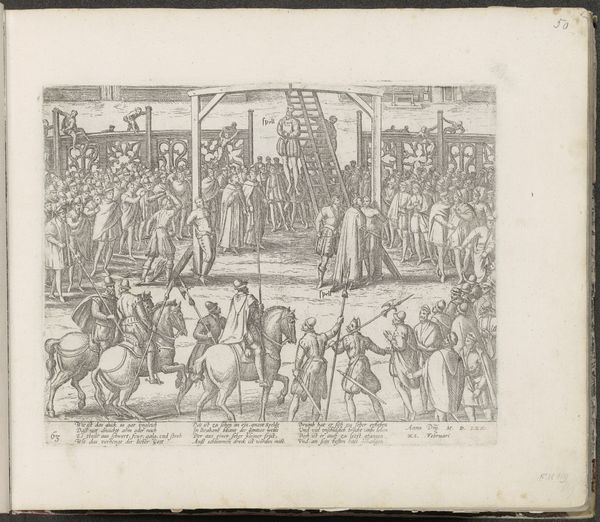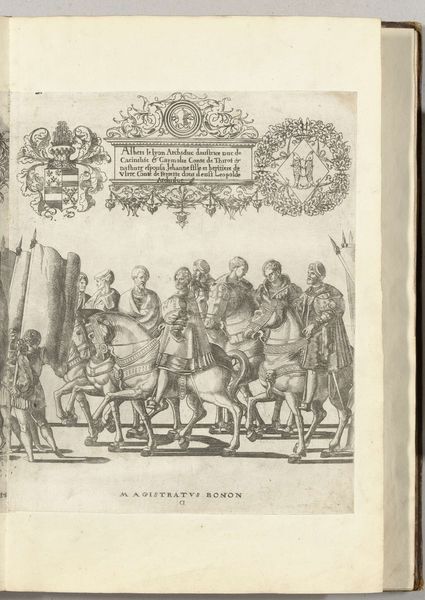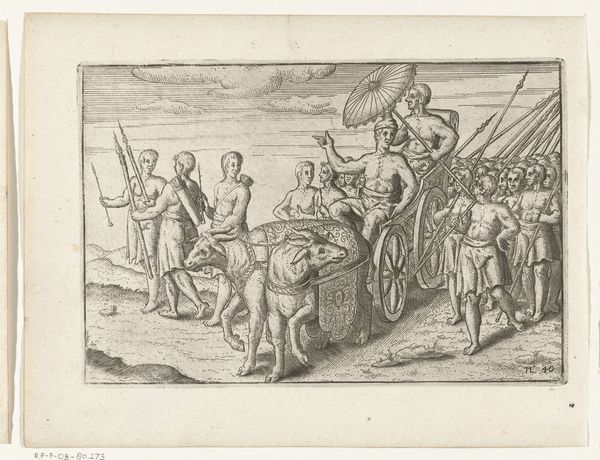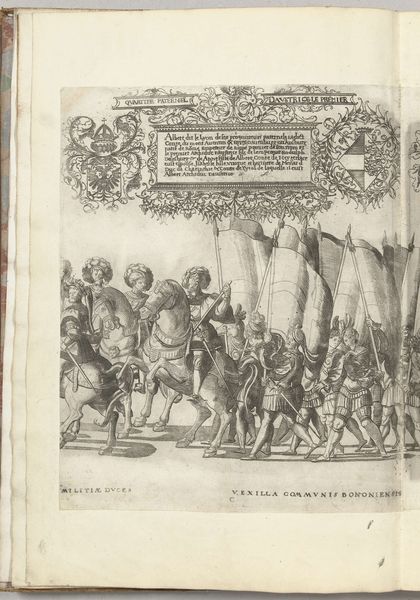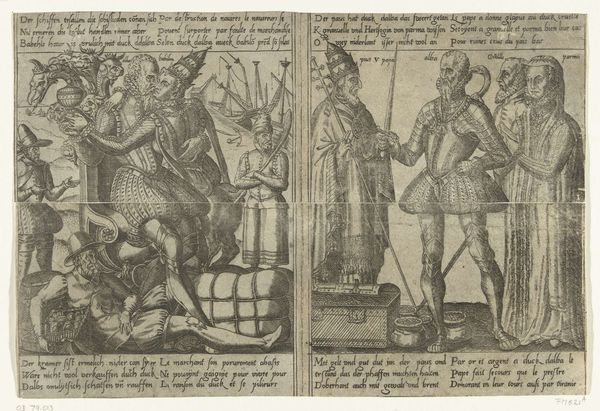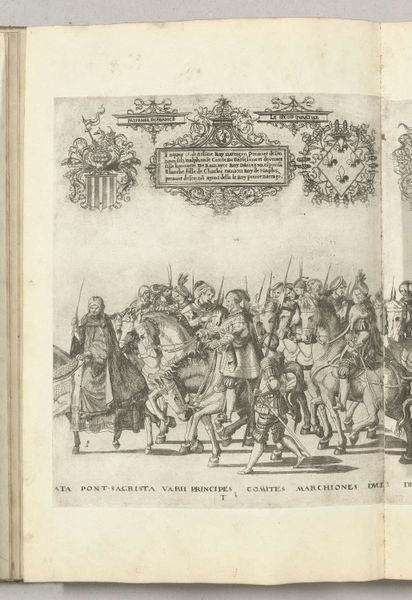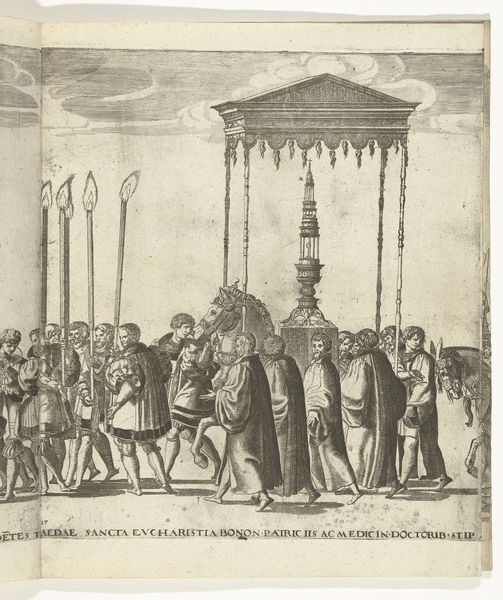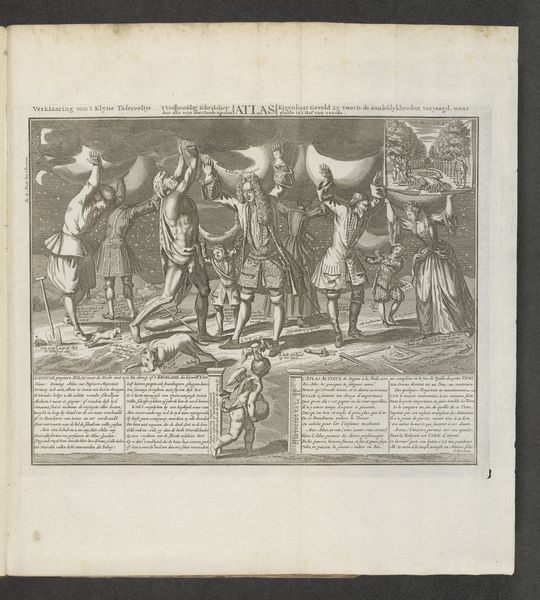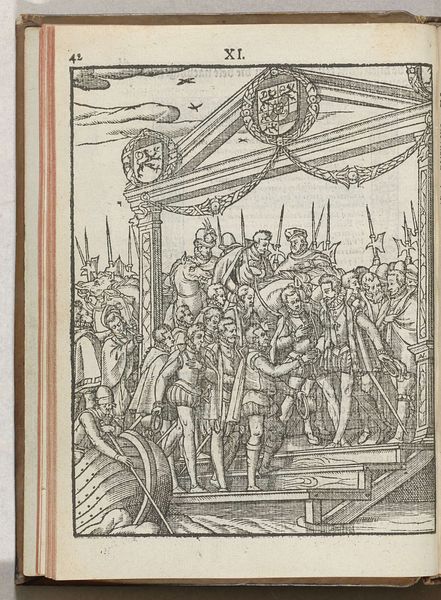
drawing, print, engraving
#
portrait
#
drawing
# print
#
coloured pencil
#
history-painting
#
northern-renaissance
#
engraving
Dimensions: height 242 mm, width 260 mm
Copyright: Rijks Museum: Open Domain
Editor: Here we have Abraham de Bruyn’s “The Duke of Anjou on Horseback Under a Baldachin,” from 1582. It's an engraving, and you can see the fine lines and detail, particularly in the Duke’s robes and the horse’s mane. There's a formality and almost theatrical quality to the scene. What strikes you when you look at this? Curator: I’m drawn to how De Bruyn utilizes the baldachin – that canopy above the Duke. Think about what a baldachin traditionally signifies. It's an ancient symbol, appropriated from royal and religious iconography to highlight power and authority. Here, it elevates the Duke, literally and figuratively separating him from the other figures in the print. Editor: So it's not just decoration, it’s a deliberate statement. I guess, looking at it that way, you notice the bearers are almost anonymous, their faces obscured or turned away. Curator: Exactly! They're part of the Duke’s image, extensions of his power. The Duke is placed centrally in the print. It suggests an immutable right to rule and places emphasis on order, perhaps even communicating an aspiration towards political stability. Now consider the social context of the time. Does this image remind you of other engravings or portraits? Editor: Now that you mention it, the composition reminds me of triumphal entries depicted in Roman art, though translated into a 16th-century setting. Curator: Precisely! And how does recognizing this symbolic parallel alter your interpretation of the work? Editor: It deepens it. It's no longer just a portrait; it's carefully constructed propaganda. I guess I was initially thinking of its formality, but I realize the figures around him help shape this regal symbolism and narrative of power. Curator: And that power comes from a long lineage, doesn’t it? Through this conscious adoption of symbols. That’s visual memory and its enduring power.
Comments
No comments
Be the first to comment and join the conversation on the ultimate creative platform.
